Noted humidity with desiccant falling at night & rising by day. Without desiccant, humidity fell by day & rose at night. Also, the desiccant wasn't getting saturated.
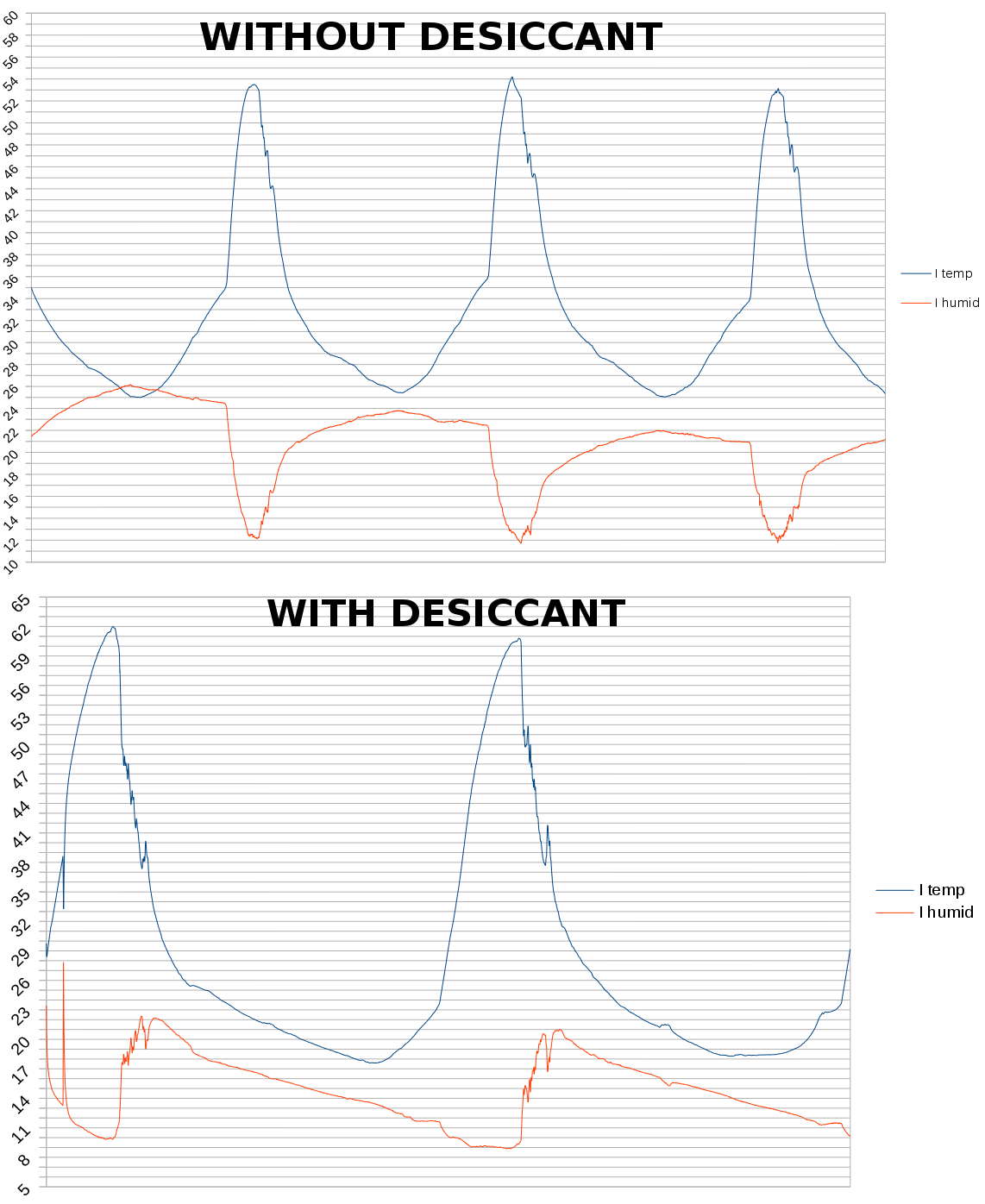
What's probably happening is the desiccant absorbing water at night & releasing it by day. There's a net transfer of water out of the filament into a baseline desiccant saturation, but it might be more efficient to run the air pump during the day to reduce the dew point to ambient levels & have the circulator fan run constantly. It might be more efficient to use silica gel instead of calcium chloride.
The desiccant does solve a key flaw in that the filament previously absorbed water at night. It's believed the water has more affinity for desiccant at night than filament, hence why humidity is falling at night.
Recharging the desiccant in cold air & discharging the desiccant in hot air is how commercial dehumidifiers work. We're just doing it over time, with sunlight as the source of heat.
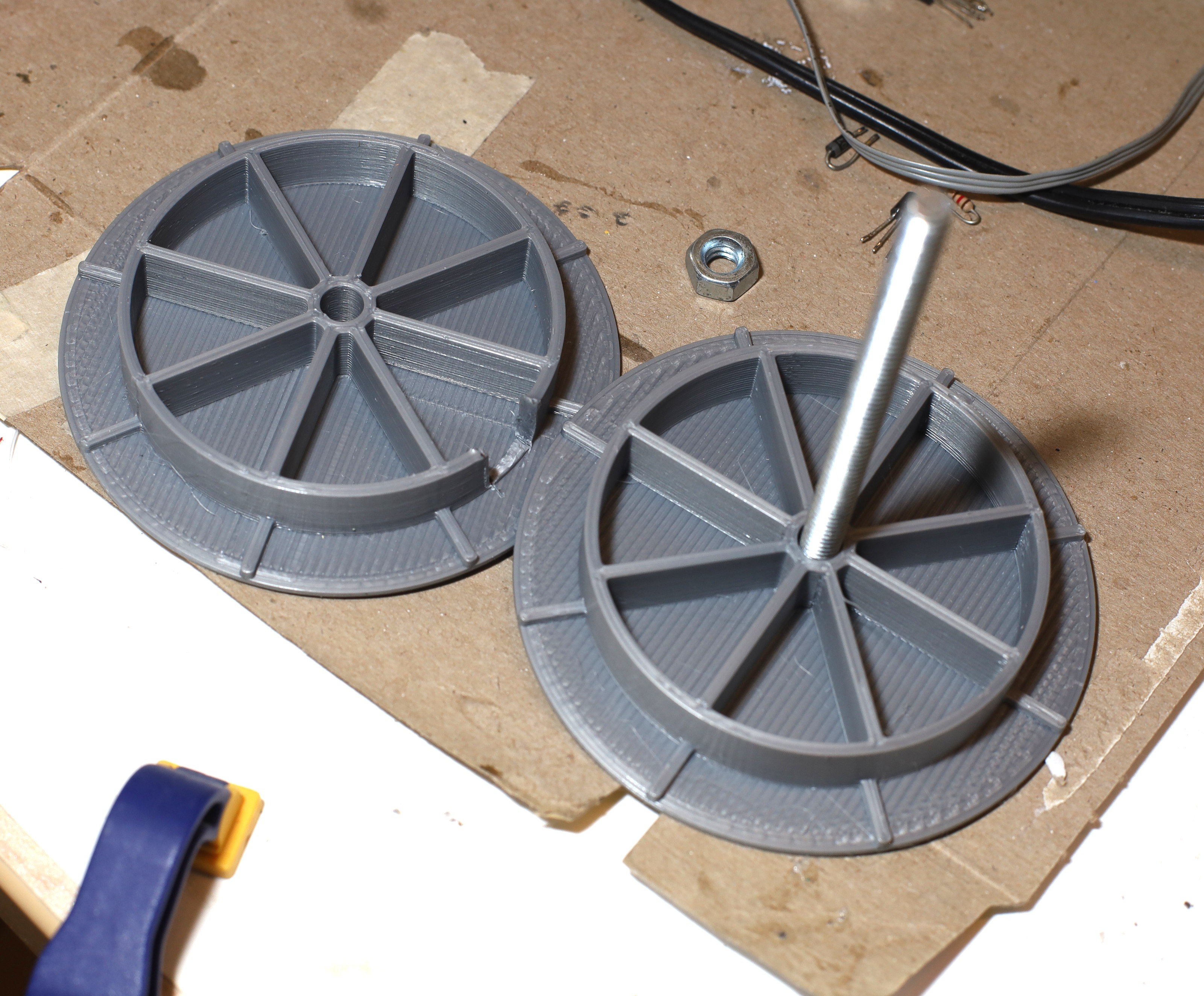
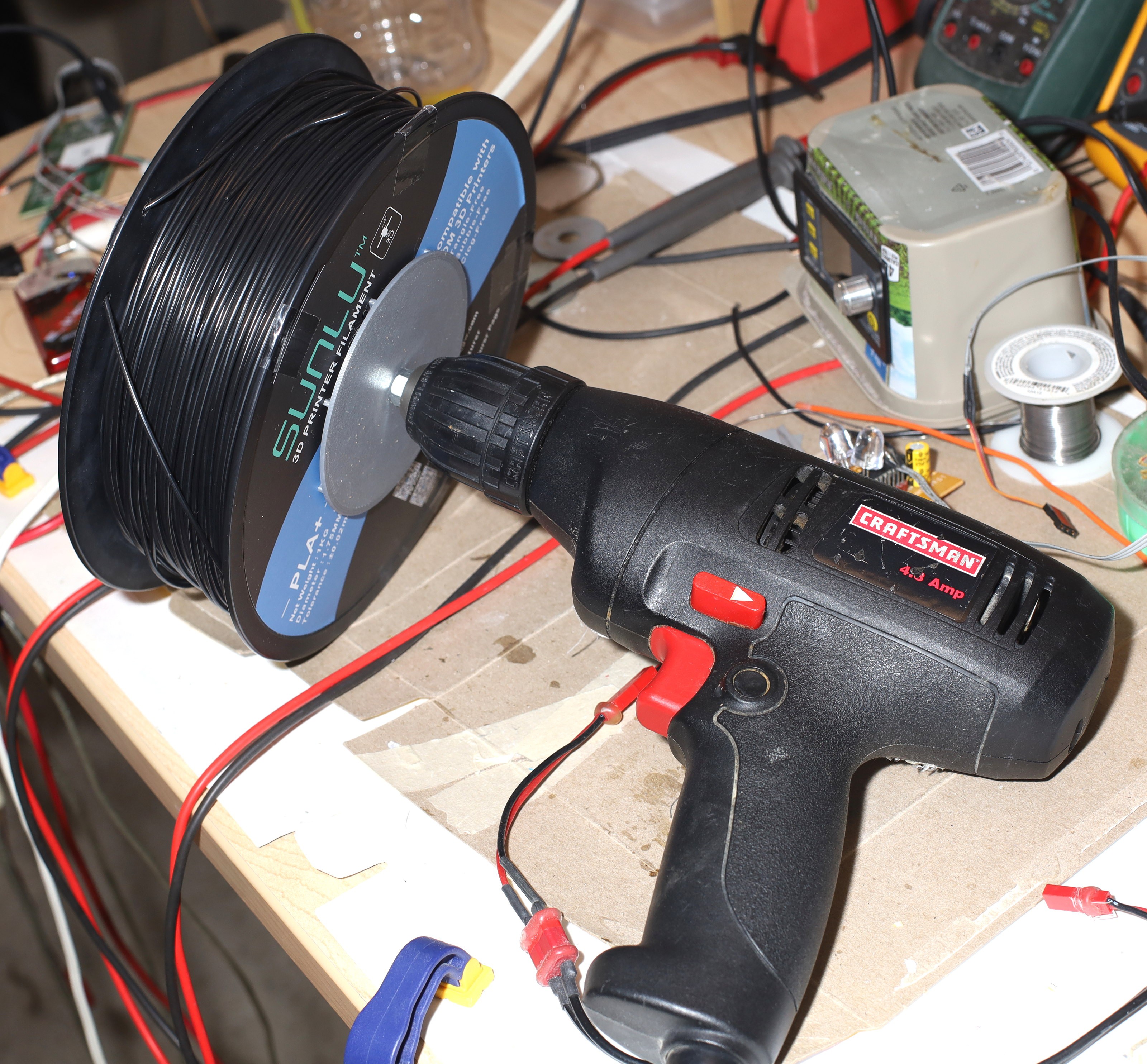
It was finally decided to transfer rolls, believing unwinding it would unstick the inner filament which wasn't drying out. The internet doesn't have any good ideas for a filament winding tool, so the lion kingdom devised this.
The problem has always been each roll having a different hole size. It was decided a new tool should be printed for every hole size & you just need to keep around empty rolls of similar hole size for winding. Some rolls are too wide for the bolt to go through, so these would require a tool with a stair step.
Only 1 roll has ever had hydration problems in the unexposed filament, so only 1 tool has been needed. Normally the exposed part gets wet while the factory part is dry. Fortunately, the hole in the sunlu roll is big enough for desiccant.
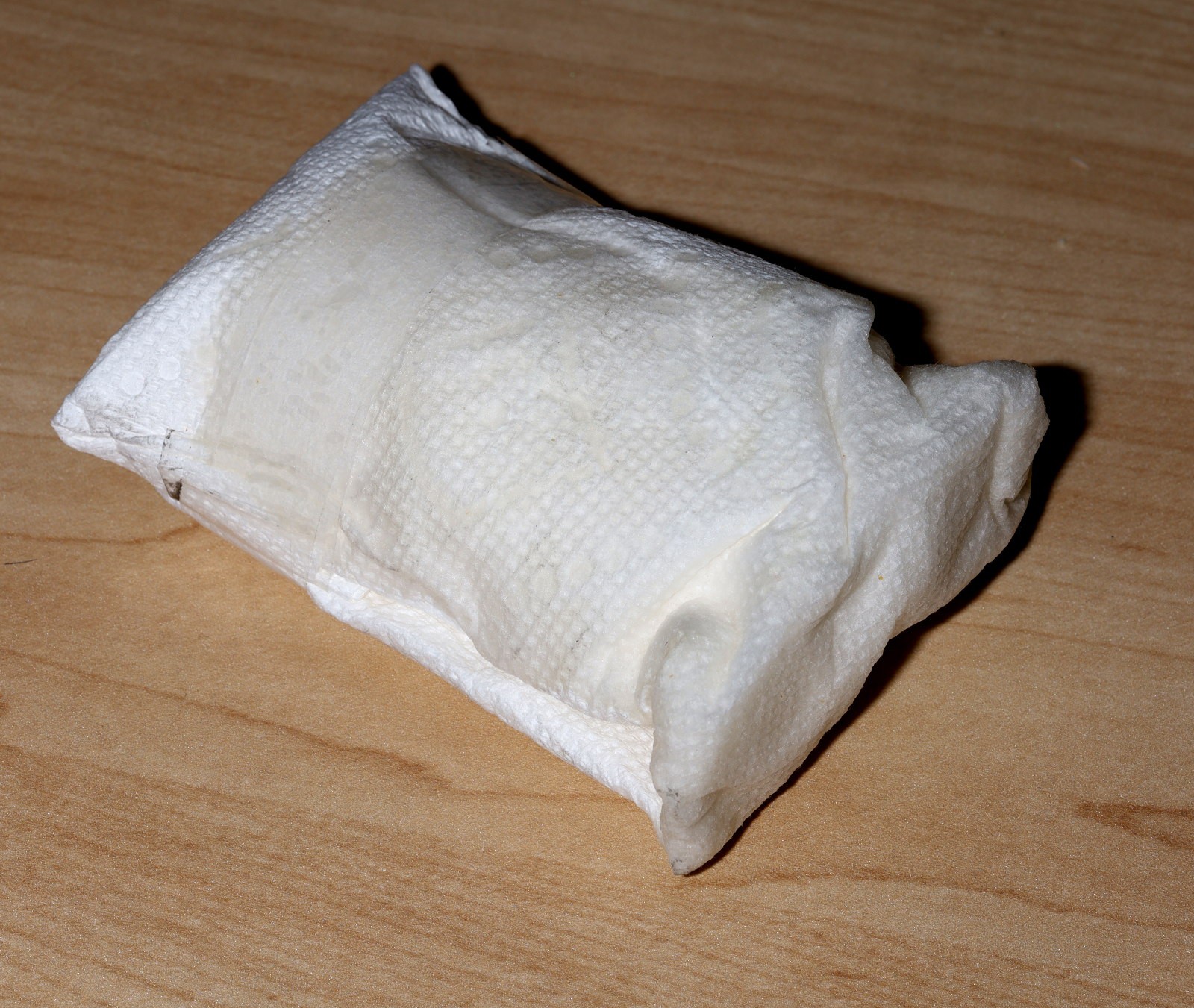
After a few more weeks with desiccant drying TPU & the pump limiting the dewpoint to ambient, the CaCl turned into a goo. It must be absorbing more water from outside at night than the pump is taking out during the day & not releasing water during the day. The only way to know is if running the pump during the day lowered the dewpoint at night, but the serial port broke & there was no data.

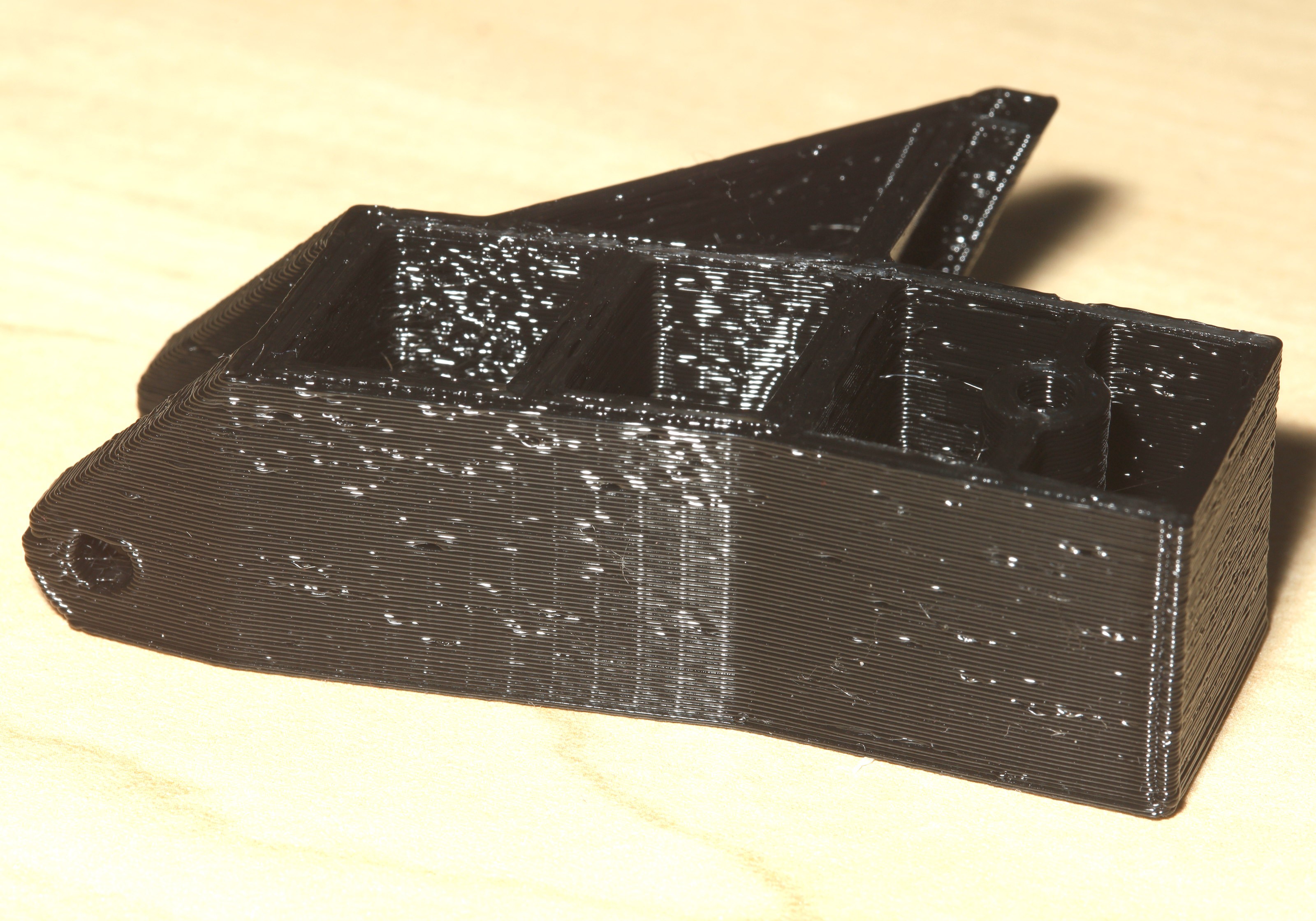
A pretty spongy test piece resulted from this experiment.
There are some valves which could isolate it at night, but the container isn't airtight overall.
The container would have to be completely air tight to just take water from the filament. Complete air tightness with enough power to circulate air & measure the environment would be difficult. An inductive power supply might do it, but it would take space.
The easiest step might be to just disable the pump again, seal off the hoses, & let the dew point rise above ambient during the day in exchange for less water being taken in at night. Silica gel might be the only solution.
 lion mclionhead
lion mclionhead
Discussions
Become a Hackaday.io Member
Create an account to leave a comment. Already have an account? Log In.